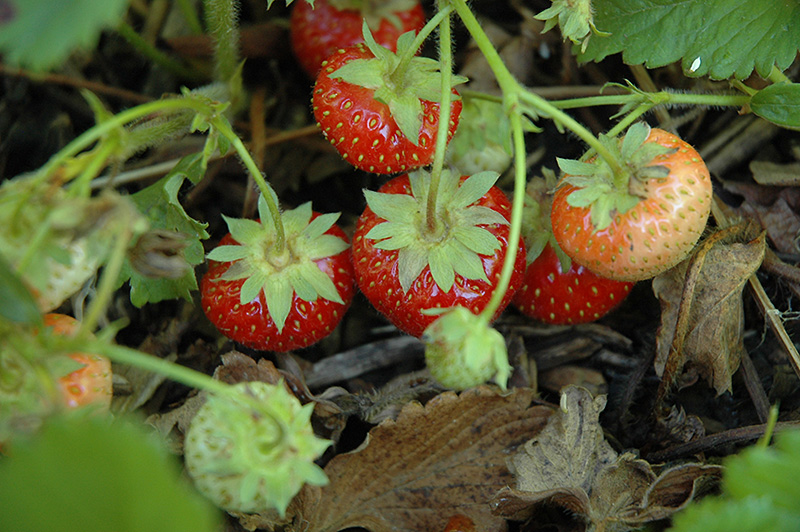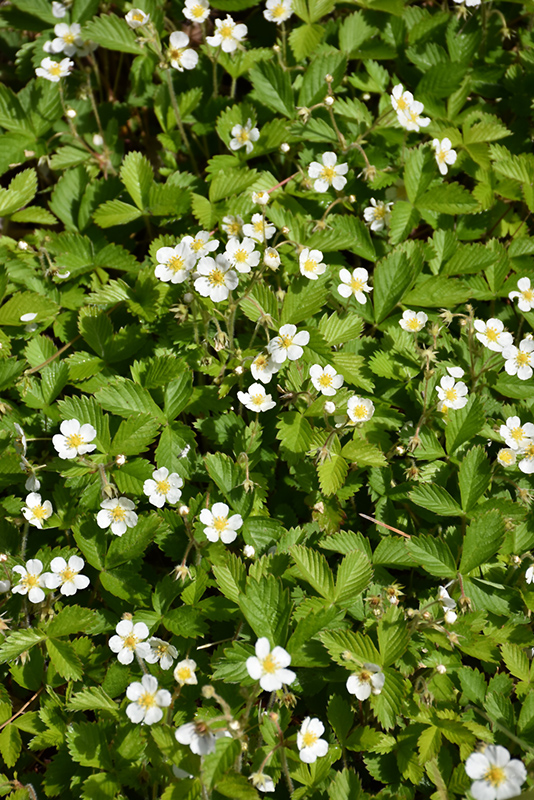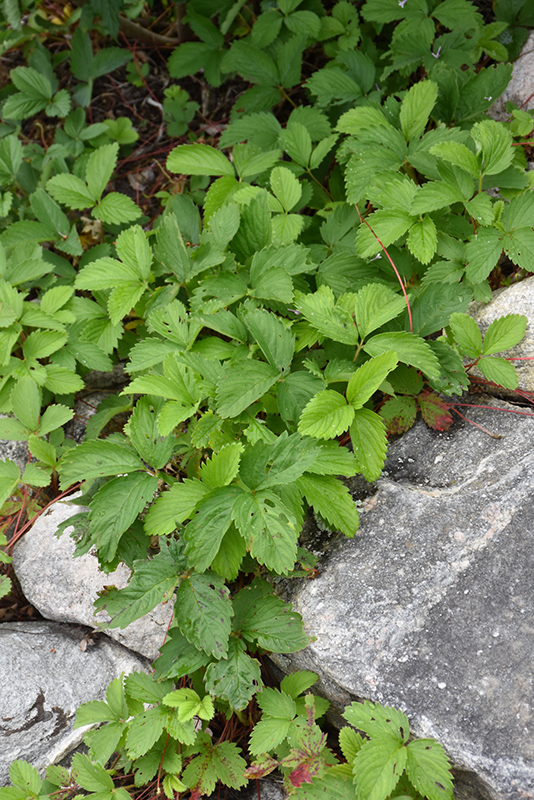Plant Finder
Height: 6 inches
Spread: 18 inches
Sunlight:
![]()
![]()
Hardiness Zone: 3a
Other Names: Virginia Edible Wild Strawberry
Description:
This species is the original parent to most of all cultivated strawberries; pretty white flowers bloom in open clusters in spring and summer and are followed by small edible berries that are high in flavor; great for naturalizing or in containers
Edible Qualities
Common Wild Strawberry is a perennial that is typically grown for its edible qualities. It produces small cherry red oval berries which are usually ready for picking from late spring to late summer. This variety is considered an everbearing type of strawberry, which means that it will repeatedly produce fruit across most of the season. The berries have a tart taste and a firm texture.
The berries are most often used in the following ways:
- Baking
- Preserves
Features & Attributes
Common Wild Strawberry features dainty white cup-shaped flowers with yellow eyes along the stems from late spring to early summer. Its attractive tomentose round compound leaves remain green in color throughout the season. It features an abundance of magnificent cherry red berries from late spring to late summer.
This is an open herbaceous perennial with a spreading, ground-hugging habit of growth. Its relatively fine texture sets it apart from other garden plants with less refined foliage. This is a high maintenance plant that will require regular care and upkeep, and should not require much pruning, except when necessary, such as to remove dieback. It is a good choice for attracting birds and bees to your yard, but is not particularly attractive to deer who tend to leave it alone in favor of tastier treats. Gardeners should be aware of the following characteristic(s) that may warrant special consideration;
- Spreading
Aside from its primary use as an edible, Common Wild Strawberry is sutiable for the following landscape applications;
- Border Edging
- General Garden Use
- Groundcover
- Naturalizing And Woodland Gardens
- Container Planting
Planting & Growing
Common Wild Strawberry will grow to be only 6 inches tall at maturity, with a spread of 18 inches. It grows at a fast rate, and under ideal conditions can be expected to live for approximately 10 years. As an herbaceous perennial, this plant will usually die back to the crown each winter, and will regrow from the base each spring. Be careful not to disturb the crown in late winter when it may not be readily seen! This is a self-pollinating variety, so it doesn't require a second plant nearby to set fruit.
This plant is typically grown in a designated edibles garden. It does best in full sun to partial shade. It does best in average to evenly moist conditions, but will not tolerate standing water. It is particular about its soil conditions, with a strong preference for rich, alkaline soils. It is somewhat tolerant of urban pollution. Consider applying a thick mulch around the root zone in both summer and winter to conserve soil moisture and protect it in exposed locations or colder microclimates. This species is native to parts of North America. It can be propagated by division.
Common Wild Strawberry is a good choice for the edible garden, but it is also well-suited for use in outdoor pots and containers. Because of its spreading habit of growth, it is ideally suited for use as a 'spiller' in the 'spiller-thriller-filler' container combination; plant it near the edges where it can spill gracefully over the pot. Note that when growing plants in outdoor containers and baskets, they may require more frequent waterings than they would in the yard or garden.
A NetPS Plant Finder tool



